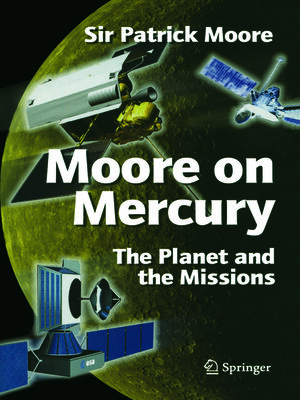
Sign up to save your library
With an OverDrive account, you can save your favorite libraries for at-a-glance information about availability. Find out more about OverDrive accounts.
Find this title in Libby, the library reading app by OverDrive.



Search for a digital library with this title
Title found at these libraries:
| Library Name | Distance |
|---|---|
| Loading... |
Mercury is one of the more difficult objects for amateur astronomers to observe because of its close proximity to the Sun. For the same reason, it is also one of the most fascinating and strange planets. Mercury is not much larger that our Moon, but orbits the Sun at an average distance of only 58 million km, compared to the Earth's 150 million km. On its sunlit side, Mercury's surface temperature can exceed 450C while the night side freezes at –180C.
Amateur astronomers can see Mercury and its ever-changing phases all year, and sometimes watch it transit the Sun – the next transit is in November 2006, followed by one in May 2016.
In his inimitable, easy-going style, Patrick Moore describes Mercury, the professional astronomers who have observed it over the centuries, amateur observations, and the past, present and future space missions to this extraordinary world.







